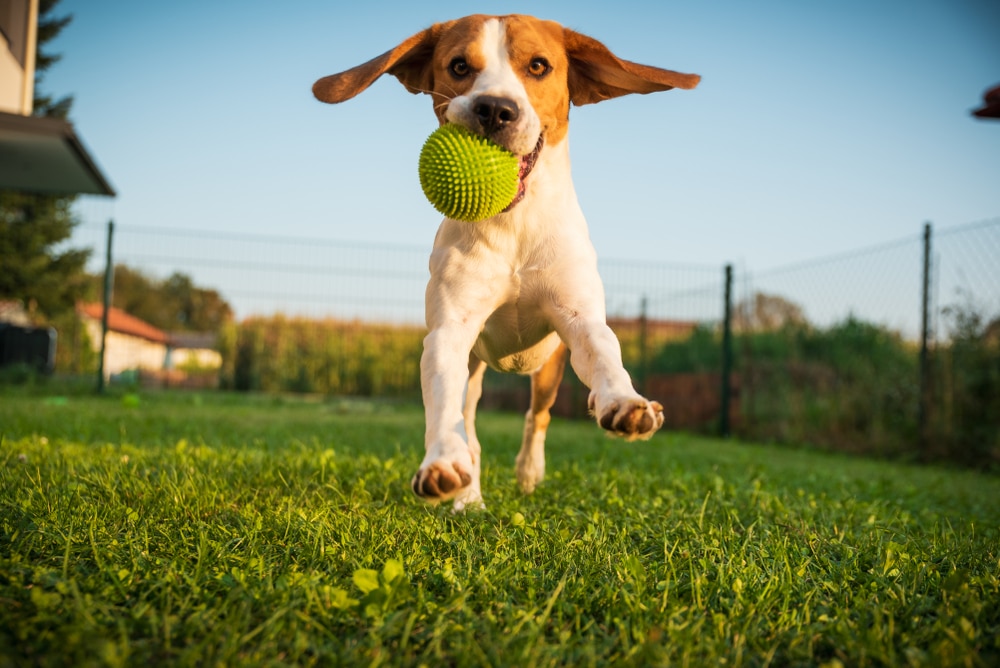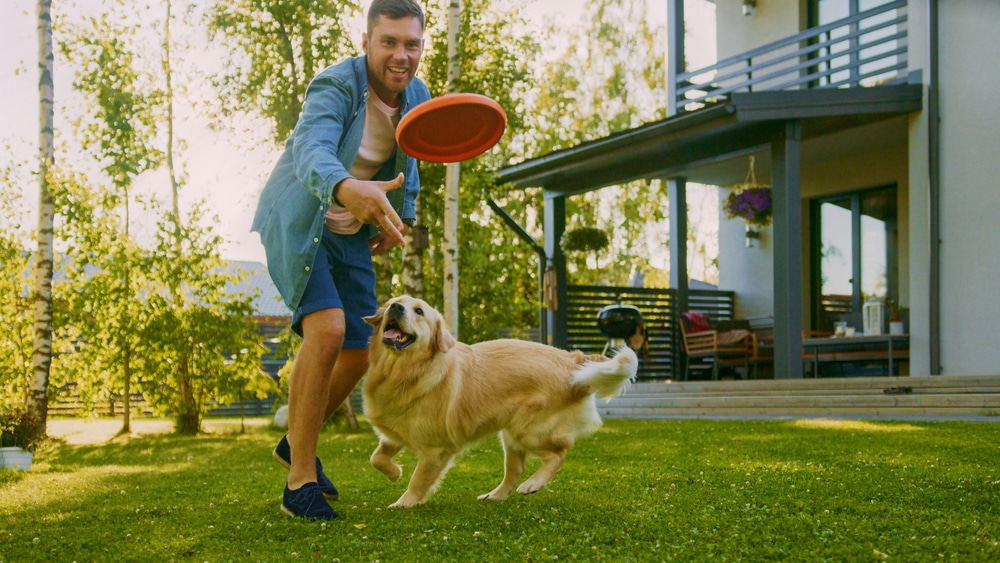Fetching is a great way to exercise and bond with your dog. It’s also an enjoyable game for both of you. Fetch is a fun game that can help keep your dog’s mind stimulated and is an excellent way to exercise, but the question is how to do it. In other words, how do you get your dog to play fetch?
Fetching is a great way to keep your dog healthy and active. To get the most out of teaching your pup this game, it is important to reward positive behavior and make the environment inviting and fun. Use a favorite toy as an incentive while keeping training sessions short and positive. Additionally, avoid discouragement by increasing difficulty gradually.
Table of Contents
7 Tips To Get Your Dog To Play Fetch

Introducing your dog to fetch can be a beneficial experience for both the pet and the owner. This guide will help your pup learn how to properly retrieve balls and sticks quickly through the use of effective techniques.
Use A Favorite Toy For Fetching
Dogs have a natural curiosity and can be encouraged to play by providing a desirable toy or object as an incentive. Choose something lightweight and easy for them to grab, such as a tennis ball or frisbee, so they can play more successfully and remain engaged in the game.
Start With A Short Distance
When you first start teaching your pup how to play fetch, don’t make them throw the object too far away. Start with a short distance and gradually increase over time as they become more skilled at retrieving objects. This will help them build confidence and prevent discouragement if they are unable to retrieve the object.
Keep Training Sessions Short And Positive
Dogs have short attention spans, so make sure to keep training sessions short and upbeat. If your pup becomes bored or frustrated, take a break and try again later. Keeping the game fun and positive will help ensure your pup is more likely to succeed in learning how to play fetch.
Avoid Frustration And Discouragement
If your pup is having difficulty retrieving the object, avoid frustration and discouragement. Instead, try encouraging them by breaking the game down into smaller steps they can understand. This will help build their confidence and help them master the skill in a progressive manner.
Increase Difficulty Gradually
Once your pup has mastered basic fetching skills, you can increase the difficulty by throwing the object a bit further or higher. As your pup becomes more adept at retrieving objects from greater distances, they’ll gain confidence, and their skills will improve even more.
Reward Positive Behavior
Rewarding your dog for successful retrievals is one of the most important steps in teaching fetch. Every time your pup brings back an object, be sure to give them a treat or verbal praise. This reinforces the idea that what they did was correct, and it encourages them to continue performing the behavior. Reward-based methods are essential for training success.
Make Sure To End On A Positive Note
The last step in teaching fetch is to make sure you end the game on a positive note. Give your pup plenty of praise and make sure their last retrieval is successful. This will help reinforce a positive association with the activity, which will ensure they remain motivated to keep playing fetch in the future.
What To Do If My Dog Isn’t Interested In Playing Fetch?
Teaching a dog to play fetch is an enjoyable activity that helps them stay physically fit and can be a great way for dogs and their owners to bond. However, if a pup isn’t interested in learning how to fetch, there are several techniques that can be used to help encourage them.
Determine Potential Reasons For Disinterest
Determine why your pup may not be interested in playing fetch by considering their breed, age, and previous experiences with the game. In some cases, it could simply be they are more interested in other activities or prefer chasing after moving objects instead of stationary ones.
Adjust The Game To Your Dog’s Needs
Once you have determined why your pup may not be interested in playing fetch, adjust the game to their needs. For example, if they are a high-energy breed, try using a longer throwing distance or using a ball that bounces erratically instead of one that rolls in a straight line.
Explore Alternative Ways To Engage With Your Dog
Alternatively, explore activities your pup enjoys and use them to build a positive association with playing fetch. For instance, if they love chasing after squirrels, practice the same motion with a ball or toy in order to encourage them to engage in the game.
Consult A Professional Trainer If Necessary
If your pup still refuses to engage in the activity, consult a professional trainer who can help you find new ways of encouraging them to play fetch. With patience and creativity, they can help you determine the best way of teaching your pup this important skill.
What Toys Work Best For Playing Fetch With My Dog?
Playing fetch is a fun activity that provides physical and mental exercise for your pup while strengthening the bond between you and them. There are various toys available to make this game even more enjoyable, such as:
- Tennis balls
- Rubber balls
- Frisbees
- Flying discs
- The Chuckit! Ball Launcher
- Squeaky toys
- Soft foam balls
- Bumper toys
- Rope toys
- Fetch rings
What Are The Benefits Of Playing Fetch For A Dog?
Playing fetch with your dog can be an enjoyable and rewarding experience for both of you. It provides a great bonding opportunity while also providing some important health benefits for your four-legged friend. Some of these benefits are as follows.
Improved Physical Health
Playing fetch is a great way to provide your pup with regular physical exercise, which can help them stay healthy and fit. This activity helps strengthen their muscles, improve balance, and increase flexibility at the same time. Moreover, increased blood circulation ensures better oxygenation of cells, boosting overall health and vitality.
Increased Mental Stimulation
Not only does playing fetch provide physical benefits, but it also helps stimulate your pup’s mind. Fetch encourages problem-solving and creativity as the dog learns how to interact with their environment in order to retrieve the thrown object. This game promotes focus and enhanced concentration, which can help them learn new things faster and more effectively.
Bonding Opportunity
By playing this game together, you can strengthen your relationship and create a positive connection with one another. This creates trust and understanding between the two of you, resulting in a better overall relationship.
Promotes Good Behavior
This game is an excellent way to teach your pup basic commands and help them develop good behavior. Through consistent obedience training, you can encourage them to follow simple tasks while also reinforcing desirable behaviors.
In Conclusion: How To Get My Dog To Play Fetch
Playing fetch with your dog is a great way to bond, help them stay healthy, and promote good behavior. Teaching basic commands like “sit” or “stay” are important for teaching the game correctly. Use treats and verbal praises as rewards during training. Spend quality time playing together with patience, consistency, and lots of encouragement. With the right approach, your pup can become an expert at the game of fetch.
Have you ever tried teaching your dog to play fetch? How did it go? Share stories of your experiences in the comments! We would love to hear from you.
